Vision for Dance 2022
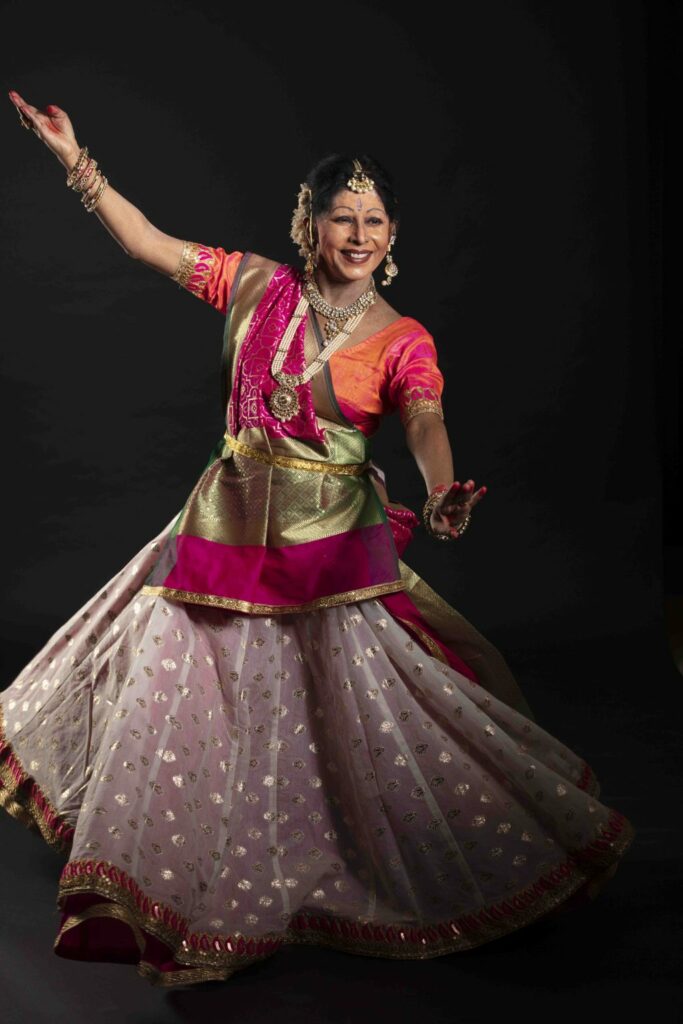
A straight-from-the-heart response from dancers and curators on their vision for dance Rama Vaidyanathan Bharatanatyam exponent “My vision for dance this year is to bring it back to stage; in front of a live audience. I am also hoping that when dance returns full-fledged to stage, it is enriched and nuanced, thanks to the pandemic that allowed us the luxury of time to engage with the camera, understand its dynamics, and become technologically savvy overall. So I am looking forward to dance that is an enhanced version of the way it used to be in terms of presentation – better stage settings, improved sound and light design, costumes that communicate, et al. What I am also hoping is to see dance unfurl in its full-fledged format. While it is true that the one-minute format, that gained momentum during the pandemic, allowed a host of people unfamiliar with the classical art form and those uninitiated access it, I wish earnestly that dance returns to where it belongs; in a full-length format that allows articulation and extrapolation. My desire is that by virtue of accessing these short bursts, we have cultivated a new audience that is willing to embrace dance and patronise it in its true format, that is beyond the realm of the two-minutes-of-magic that seems to have taken over our screens. I hope more people shed the comfort of the screen and make their way to watch full-length performances in the comfort and beauty of the proscenium. Amongst other things, the pandemic also allowed us – performing artistes, the luxury of time to read, introspect, and create work without the pressure of a deadline. So I hope that the performances that unfold this year are organic and authentic. I’m looking forward to work that has truly marinated over several months and therefore is a culmination of thought, rigour and beauty.” Ranee Ramaswamy & Aparna Ramaswamy Bharatanatyam dancers-choreographers, Co-Directors, Ragamala Dance Company, Minneapolis, Minnesota, USA “Through our Bharatanatyam practice, we engage the dynamic tension at the intersection of tradition and innovation, ancestral wisdom and creative freedom. Our work ranges from margams to large-scale works. Through meaningful collaboration and multi-layered dialogue with composers, musicians, authors, scholars, designers, and visual artists, we create layers of metaphor that explore the saturation of the senses that occurs when these art forms come together. Since 1984, we have returned to Chennai every year to study and perform under our guru, Padmabhushan Smt Alarmel Valli while creating our own body of work in the US. This immersive training in our guru’s aesthetic and lineage has formed the bedrock of our creative vision. I founded Ragamala Dance Company in 1992 out of a deep desire to see our cultural forms recognized on major US stages. In 2022, we will continue to create projects in close collaboration with artists across genres. The pandemic has forced us each to work in isolation, but our Indian artistic traditions have a long and splendid history of growing together, intertwining to make a greater whole. This spirit of collaboration is necessary in our world, and shows us that our work together must be intentional and meaningful in order for us to share the rich complexity that our forms deserve. The pandemic has shone a light on many critical issues facing our local communities and our larger world. These provide immediate and obvious material for new pieces, but is it the most effective or lasting way to explore our humanity? In our work, we keep returning to our ancient epics, stories, and poetry. The wisdom of these literary traditions acts as a portal between past and present, providing a contemporary resonance that nourishes us and speaks to the human condition now and forever.” Dr Shovana Narayan Kathak Exponent, Creative Director and Producer “The negation of social and cultural sensibilities of traditional India by the colonial masters, ignited a spirit of nationalism. In the last 100 years, the world of classical dance became witness to yeoman changes. There was emergence of new streams of classical dance from the kernels of ancient local traditions, some amalgamated to form a new language of dance, but all incorporating a ‘margam’ with structured tiers of presentation and Sanskrit terminologies linking them to the awakened sensibilities of ancient shastras. In the last century we have come a long way: from the point of awareness and embracing of traditions, to giving voice to abstract, secular, contemporary social issues, sometimes in lieu of old classical themes centering round Puranic legends and sometimes creating a new language of dance itself. The latter is welcome for it has shown maturity and a sense of comfort and willingness to embrace new ideas and thoughts. At the time of Indian independence, the four recognized classical dance forms have today swelled to eight in number. There is a growing voice for various regions to include their newly ‘structured’ or newly ‘discovered’ localized regional form to be accepted as ‘classical’ or a ‘major dance tradition’ (the official term of the government). While this is welcome, yet it displays mushrooming of ‘new’ dance streams. Only time will tell how many will survive. Similarly, with the phenomenal reach of the electronic media and the big screens, combined with change in lifestyle that breathes’ fast pace’ to the point of being ‘spectacular’ in character, quick revenue earning models have set new paradigms. Dancers have taken license to improvise and modify in such a manner that it is difficult to see the essential features or spirit of the parent dance form. The problem lies in tagging the name of the original art form to their licentiously developed new styles with marketing jargons proclaiming such ‘new’ styles within the so-called ‘classical’ framework. They seem to be disturbingly on the rise, especially in the field of Kathak. This is affecting, modifying and contaminating the way the general audience think and behave who, used to ‘fast food’ culture, want to see the same in the cultural sphere in the name of ‘appreciation of classical
#iamayoungdancer
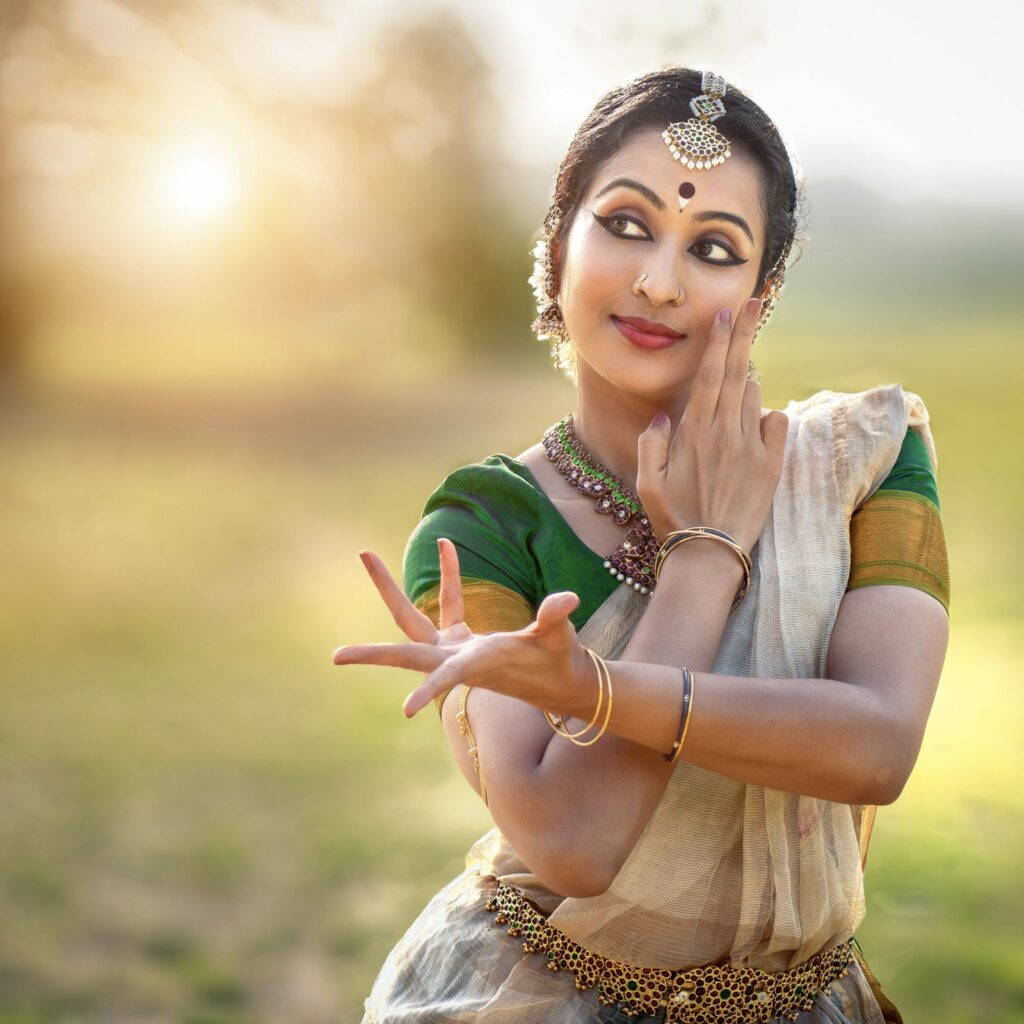
A conversation between Coimbatore-based Bharatanatyam dancer-choreographer, Divya Nayar and Singapore-based Bharatanatyam dancer-choreographer, Madhuri Suresh . Sometimes, the best conversation starters are those that investigate the very premise of the conversation itself. This conversation did precisely that! The two dancers began with sharing their perspectives on the idea of a young dancer. Thereon, they moved to focus on the dynamics between a teacher and a student, and to individual approaches to teaching methods, then and now. While a few years ago, there was an unsaid rule, to blindly follow what was taught, kids of this generation, the two dancers acknowledged, are very bold and do not shy away from asking questions or reasoning out a few things. It becomes challenging therefore for the teacher to find new ways to engage with a student. The conversation also touched upon the importance of empathy and that of constructive criticism, and the importance of peers and colleagues to share and exchange notes on each other’s dance. We are certain that Divya and Madhuri have made a new connection and will continue to stay in touch!
Books Banter

To Odisha, with Love In conversation with Odissi exponent, Ileana Citaristi in the backdrop of the launch of her new book ODISSI AND THE Gita Govinda. / Why the Geeta Govinda? What is your relationship with this text? Jayadeva’s Geeta Govinda poem was one of the first things which fascinated me when I started to learn Odissi in 1979; at first as a romantic story and then as an allegorical, philosophical, sensual, spiritual work; all rolled into one. Moreover I had the good fortune to learn the exquisite dance choreographies of the Ashtapadi directly from my mentor and guru Kelucharan Mohapatra, whose renditions of the same have become legendary. Is the Geeta Govinda a text that you engage with all your life, and in a sense, allow your relationship with it to mature even as you bloom as an artiste? It certainly continues to fascinate and to amaze me for the variety of angles from which one can approach its content! One could even just study it from a botanical point of view for the wide range of trees, plants, creepers and flowers depicted! It is an endless source of inspiration. As far as my rendition of it through dance is concerned, the more I study it and learn its different aspects, the more I enjoy performing it. From a dancer-choreographer’s point of view, is the Geeta Govinda a work in progress? Do you keep going back to the text, because of the philosophical content of the text, and how it appeals to you? My philosophical background with a special focus on mythological symbols and their different layers of interpretation, which was the subject of my PhD thesis, is of course predominant in my approach to the text. But equally appealing for me is the romantic aspect of the story and the dreamy quality which surrounds the entire poem which fascinates me and fuels my imagination. What is the focus/premise of the book and how long did you work on it? As I have mentioned in the Preface of the book, the book is mainly a work of love towards Odisha and its rich culture. When I started writing this book which was to centre around the topic of the Geeta Govinda poem and its relation to Odissi dance I realised that I had to start from the roots. I had to start by introducing history, royal dynasties, rituals of the temple, life of the Devadasi, creeds and beliefs of the Vaishnava dharma, anecdotes about Jayadeva’s life, evolution of the performing arts in Odisha to reach to the core of the subject, that is the transformation of the written poem into a visual and performative one. I wrote the book during the first year of lockdown and in fact this is what helped me to go through it. My days were spent surrounded by all those books which I had almost forgotten to possess although they had been already underlined by me in the past. I realised that in the first years after coming to India in the early 80s my academic background was still a strong factor and the reading of all these books on religion, philosophy and history provided me with a strong understanding about the dance and the culture I was going to learn. Then with the passing of years the practical aspect took the upper hand; training, performances, rehearsals, choreographies, teaching sessions and so on filled up my entire days and the reading practice started fading away. It was during the lockdown period that all this surfaced again. My last book, my autobiography, had been entirely written during my travelling, either by road, train or air whereas this one has been written completely in confinement! Is it only for dancers of the Odissi form or would you think it cuts through barriers of genre, et al? It is certainly related to the culture of Odisha and to the interconnection among all its different streams such as literature, sculpture, poetry, painting, music, dance and history and how the culture is still reflected in the daily life and beliefs of the people. But it could be relevant to whomever is interested in knowing the history and the process of transformation our art forms went through along the centuries. Over the years, many scholars have written on the Geeta Govinda; what is the unique perspective that you bring to it and therefore is it also a personal take on the text? Mine is mostly an historical book which may help the students of the present form of Odissi dance in understanding the foundations of what they practice. The book traces an overview of the different components which define the cultural landscape of the state of Odisha in relation to its history, religious cults, art and literature and links the development of the various aspects to the role played along the centuries by the Geeta Govinda poem in its different manifestations. From being an important component of the rituals performed in the Jagannath Temple to becoming an essential part of the people’s daily life and artistic expressions, this immortal poem has exercised its influence on the cultural scenario of the state from its early inception in the 12th century until the present times. After the first chapter which deals with the history and myths related to the Jagannath temple, the second is dedicated to the description of the poem, its structure and content, while the third is an exposition of the cultural activity exercised by the temple dancers in relation to the different rituals celebrated in the temple. The four chapter deals with the historical development of the performative scenario in Odisha in the last century and the fifth chapter is dedicated to the analysis of some of the present dance compositions based on the Geeta Govinda poems as interpreted and visualised through the art of abhinaya in the revived present form of Odissi dance. The sixth chapter is dedicated to the music of the Geeta Govinda in relation
Travel Diaries
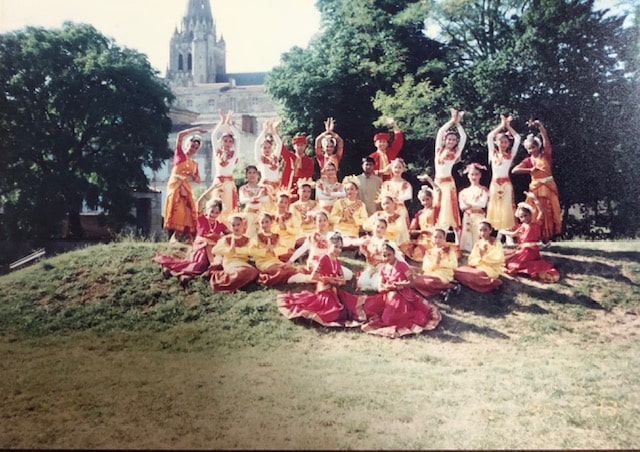
Little Angels in Paris Just as we celebrate our founder, Neila Sathyalingam’s birth anniversary, we travel back in time to share a travel nugget from Little Angels, a multi-ethnic ensemble she co-founded. The Singapore Multi-Ethnic Ensemble Little Angels was formed in 1985 by three prominent dance teachers. Neila Satyalingam, Som Said and Yan Choong Lian. Their intent was to carve out their “spaces” in Singapore’s cultural firmament. Little Angels was a platform to present programmes for children. The performances, which were multi-disciplinary, featured hybrid elements of Chinese, Malay and Indian dance which extended the borders of each of these distinct dance styles to engender greater excellence and artistry while promoting inclusiveness and the embrace of multiple cultures. This forging of a Singaporean dance resulted in the ensemble travelling overseas and performing in well-regarded arts festivals in Europe in the 1990s. A senior dancer and psychiatrist, Deva Priya Appan recalls, “I was part of Little Angels. In 1995, when I was in Primary 5, I travelled to Paris with the troupe and we all had to learn elements of Malay and Chinese dance along with Bharatanatyam and we performed there. It was during school term time but my parents allowed me to participate as they considered it prestigious and I remember it as a memorable experience which further quelled my interest to dance and perform.”
INTERVIEW
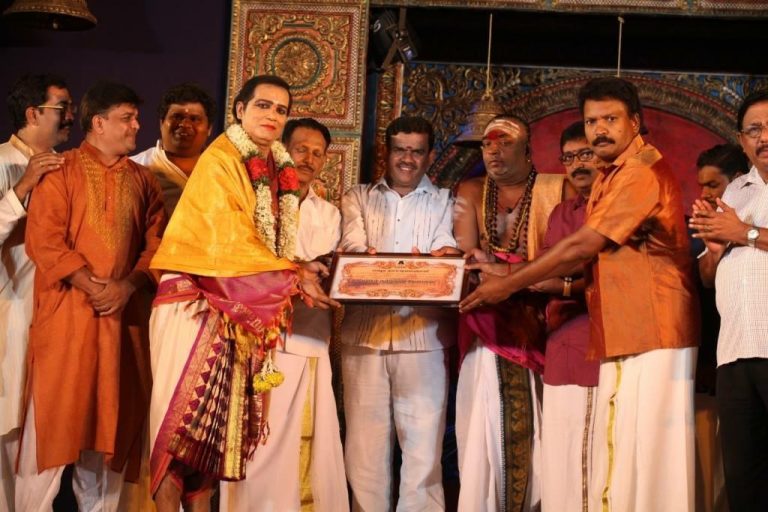
V Balakrishnan, Singapore-based dancer, shares his life’s journey with Bharatanatyam in conversation with Vidhya Nair How did you first become acquainted with the world of dance? From a very young age, I accompanied my mother, an avid film-goer to the cinemas. As the only son amongst five daughters, I was her pet. I responded to colours and music early on and my mother tells me that I was a natural dancer. The movies were and still are a great source of inspiration for me. In my younger days, to be a male dancer was considered a taboo. At school, I was active in all things arts. I sang tenor in my school choir without any prior training and acted in a number of English musical dramas – Love Boat, Andy, Get your Gun, Dance with Waltz, just to name a few. My father was aware of my interest and talent but insisted I focus on my academics. He wanted me to land a stable government job, settle down, have children and build for myself a typical middle-class life. It was unknown to us then that my life would not fit with their original expectations. Your first career was in the media. Was this how you came to be acquainted with classical dance? Yes. I am a media veteran. I worked for the RTS (Radio & Television Singapore, later Singapore Broadcasting Corporation then Mediacorp) from 1976 till 2006. I first encountered established dancers who would come in for a live recording. I was fortunate to be assistant director for a number of recordings, thanks to my avid interest in music, staging, lights and camera. I met Lakshmi Viswanathan, Chitra Visweswaran, the Dhanajayans, Anuradha Jagannathan, Srividya, our own Madhavi Krishnan and Balagopalan of Kalakshetra. Luckily for me, Balagopalan had taken up a stint in SIFAS, so I requested him to accept me as his student. This was way back in 1977. He accommodated me and I took individual classes with him at 9pm. I learned Thattadavu and Nattadavu from him. Unfortunately, this didn’t last long as he had to return to India and around the same time, my father suddenly passed away. I was only 23. It turned out that he had liver cancer which had remained undiagnosed. Looking after the family became my sole responsibility. My younger sisters were still in school. Between my mother and I, we looked after the family. I couldn’t continue to learn but there was a fire in me to find a way, somehow. How did you find a way to learn Bharatanatyam? It was a coincidence that I came to be introduced to Swami Shantanand Saraswathi (Swamiji) in 1979 whom I was drawn to instantly. I started to attend his regular Akhanda bhajan sessions. There, I had the opportunity to choreograph and dance. In 1981, when Swamiji founded Kala Mandir in Singapore and Kuala Lumpur, I began dancing in their earliest production – Dattatreya – where I performed Jatiswaram for a song based on Lord Muruga. It was there I came to be acquitted with Mrs Shanta Bhaskar who was a faculty member there and we performed on stage together too. In 1986, I met Neila Satyalingam (Maami). I was instantly drawn to her; she was confident and glamorous. Her first lesson was Khanda Alarippu. I had no idea what it was. I had to take help from others. That’s how I learned my Bharatanatyam. To learn the basics as an adult, it was very difficult. By this time, I had already received vocal Carnatic training lessons with K S Ganapathy and Nageswaran at Kala Mandir and spent a month with Karaikudi Krishnamoorthy learning the basics of the Nattuvangam. I had also taken classes in Sanskrit at the Ramakrishna Mission. My career in media was also steadily progressing, I was producing artistic shows, working with many individuals and arts groups; my network was growing. This gave me the motivation to pursue Bharatanatyam seriously. What was it like being a student and performer with Maami and Apsaras Arts? My most influential teacher was Neila Maami. I continued to learn with her all the way till 2006. As she was teaching with Apsaras Arts and People’s Association, she was actively creating many shows and productions. The need for male dancers became necessary for the many character roles Maami had envisaged. I introduced Maami to many promising young male dancers – Charles, Manimaran, Moorthy, Guna, to name a few, and later on, to young G Selva and Veshnu, all of whom came to be part of Maami’s many productions. Maami offered us training and exposure along with many of her Kalakshetra contacts who came to Singapore to teach. Some of my most memorable lessons include sessions with Shanta Dhananjayan. In an individual class, I learned the Keerthanam, Aananda Nadamidum Padan. Just by her singing line by line to me, I absorbed the piece quickly. I put that piece to practice swiftly with a performance alongside Suganti and Jayanti Kesavan.Shanta Dhanajayan also taught me the Varnam, Mayam Edho Swami. All the intricate nuances in a week, I still hold dear until today. I learned from Maami, Swami Naan Undan Adakai with recorded music, and later many of Adyar Lakshmanan’s choreographic pieces. All of these items I have performed over and over again at temples with the voices of Satyalingam Mama and Mohana Harendran in live recitals. My love for live music for a recital was set. I also learned from Krishnaveni Lakshmanan when she visited to teach us as well. Learning this way and performing regularly seasoned me as a performer and my deep love and appreciation of Carnatic Music and the Tamil language helped me establish myself as a familiar and regular performer at temple festivals and on television. I recall a lesson in 1986 with Maami when she was teaching Ananda Nadamaduvar Thillai. The experience was so surreal, I felt Lord Nataraja had come himself to teach me. The lyrics consumed me fully and on that
POINT OF VIEW
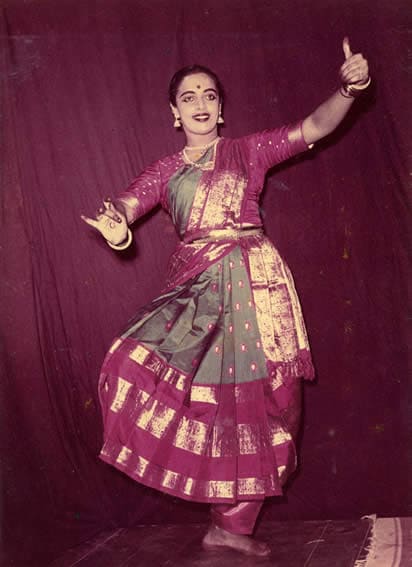
An excerpt from a speech by Neila Sathyalimgam as she received an award, where she recalls the genesis of the name, Apsaras and raises a toast to the future of Indian arts, in Singapore. “It was in the year 1977 and there was a competition. The competing groups had to come up with interesting names for their group, and I asked my husband to think of a name and it was he who came up with the name Apsaras. My husband was very smart while choosing that name and said to me, “Neila remember, you have the dancing angles in Chinese dance, Apsaras like Urvashi, Rambha, Menaka in our tradition. So I think it is a universal name in that sense. In south east Asia, this name would definitely go.” That’s how the name Apsaras was born! The Ceylon community here was very strong in the projection of all the arts like music, instruments, et al. They jumped up when they knew that my husband knew music and I knew dance and that’s how I started teaching and began my basic classes under the umbrella of the Ceylon Tamil Association at Handy Road. We are very very influenced by South East Asian culture. We do a lot of amalgamation with different dance traditions. In fact, in Angkor Wat, we had the Malay dancers for the warriors. I thought that was an excellent platform for us, to create a new idea in Indian dance where we collaborate with South East Asian traditions. I still enjoy those invigorating experiences on how to teach and it really keeps me occupied. My mind is always working on new choreographies, and what would I do next. In fact, I look at new fashion magazines, to get the latest material in terms of costumes and their trends; everything that surrounds me, you know. For a teacher to be successful, it is not only the teaching that matters; you must have every essence of every part of dance, from lightning to sound to music. So many things that you have to choose perfectly to perform an item. So I think I have done an extremely good job. Today, I find, I have at least 40 students who are already teaching and propagating dance. Singapore has a great future where the Indian dance platform is concerned, because the interest has grown. Singapore now is known for a platform of good standards and good knowledge and I hope we are going to continue with that trend in the years to come.”
Work-in-Process
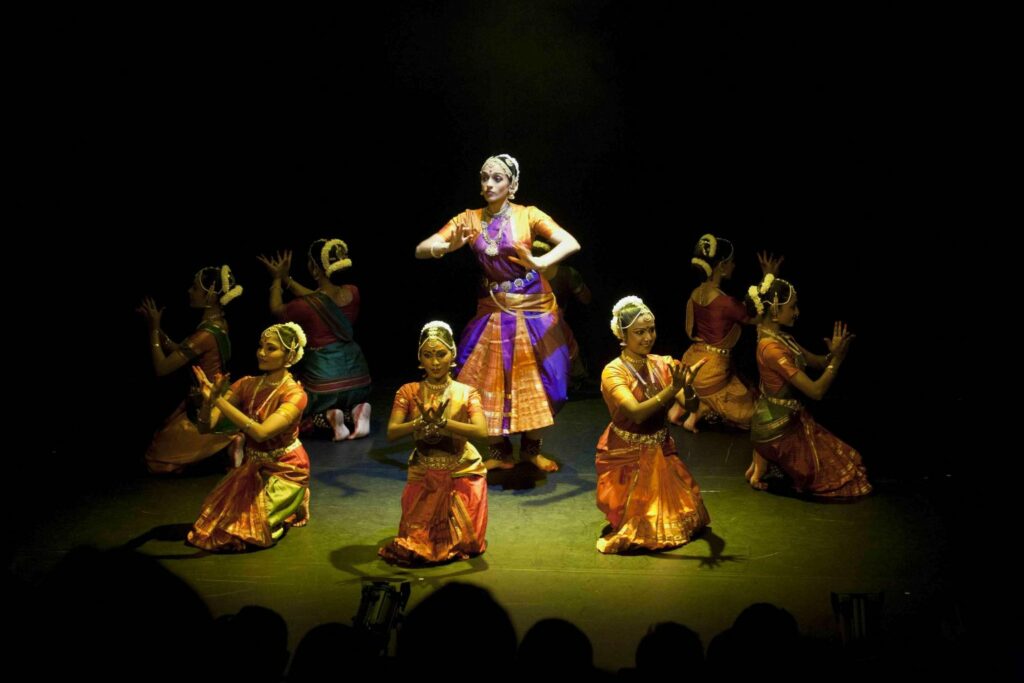
How does a choreographer who wears multiple hats, re-imagine an old work to make it relevant, and extraordinary at the same time? Read on for an interview with Aravinth Kumarasamy, Artistic Director of Nirmanika Re-imagined As a youngster Aravinth Kumarasamy says he was always very interested in the basics and nuances of architecture; “I travelled – in my pursuit to learn – to many ancient monuments in Asia appreciating their beauty and the many stories each of them hold within them.” This admiration and appreciation for the world of architecture is really what inspired him to conceptualise a dance production inspired by some of the ancient monuments. Say hello to Nirmanika Re-Imagined that premiered in its new avatar on February 26 and 27, at the Victoria Theatre, Singapore. Inspired by the architectural marvels of iconic temples of India and the influence beyond into Southeast Asia, this work is an iconic production that provides a deeper understanding about our Indian heritage and culture. Architecture and dance, albeit are two very different disciplines, that share commonalities in process and creation. Choreographers and architects, when creating new bodies of movement or conceptualising building infrastructures, are always posed with the question on how to manipulate space and light to construct new forms. Nirmanika, a dance production which means “architectonics” in Sanskrit, explores the forms and aspects of architecture through de-constructing ancient monuments such as India’s Taj Mahal and Indonesia’s Borobudur Monument through Bharatanatyam techniques such as nritta (movements) and abhinaya (expressions). Collapsing the performance into six segments of dance that elaborates on concepts such as geomancy, space, structure, philosophy, history and form. Nirmanika is ultimately about the beauty of architecture expressed through dance. In its original form, as envisaged by Neila Sathyalingam, Nirmanika explores some of India’s renowned monuments – Sun Temple (Konark), Meenakshi Temple (Madurai), Brigadeeswara Temple (Tanjore) and the India-inspired Buddhist monument, Borobudur in central Java, Indonesia. In this re-imagined version, the work includes five more monuments representing the five elements – Ekambareswarar Temple (Earth), Srikalahasti Temple (Wind), Arunachaleswarar Temple (Fire), Jambukeswarar Temple (Water) and Chidambaram Nataraja Temple (Ether). Nirmanika Version 1 was performed with a live music orchestra across the venues in the world. In its new version, Aravinth Kumarasamy, who also composed music for this work, pre-recorded the music with a stellar team of musicians including Carnatic musician, Sikkil Gurucharan from India. While the original costume and accessories as designed by Smt Neila Sathyalingam have been retained, the re-imagined version has an additional costume designed by Mohanapriyan Thavarajah of Apsaras Arts. Read on for an interview with the Artistic Director of Nirmanika Re-Imagined as he breaks down this work, for us! Aravinth, do you remember what was the exact moment when you decided you wanted to re-envisage Nirmanika? During the lockdown in late 2020 and early 2021, I realised that I could use the free time I had on my hands to re-imagine this work by Neila Sathyalingam, as 2022 also marks the production’s 10th anniversary. We had also returned from the Natya Kala Conference (NKC) which was held in late 2019 at the Krishna Gana Sabha in Chennai, where we had presented Anjasa, a production, which was created as a sequel to Nirmanika. Anjasa received much acclaim from the dance fraternity gathered at NKC and I thought it would be good for many to see Nirmanika which was where our journey towards exploring architecture and dance really began. As Artistic Director, how different is it to envisage something from the start vs re-imagining an existing work? Yes, I must admit this was a daunting task indeed as Nirmanika had already been perfected with so much re-staging across numerous international tours etc. It was hard to envisage how I would edit any of its segments. But the process helped me understand that there is always room for new ideas. And herein was born a new act on the Panchabootha Sthalams. This was created from scratch and I re-worked some of the existing choreographic sequences. How did you decide what must go, and what must remain? Can you please give us an example? Most of the acts were retained, and a segment on the great monument, Taj Mahal was completely removed as all the monuments were based and inspired by the Pallava and Chola architecture. In that context, Taj Mahal seemed totally out of place. On one of the international tours, I had added a segment on the Mahabalipuram Pancha Rathas, then again, the other monuments part of production, were all “living” monuments and both Mahabalipuram and Taj Mahal aren’t. Hence, I decided to center the theme around living monuments. Has Nirmanika also been re-imagined for a different kind of audience? If yes, what is that understanding you bring as its director? After a decade, I wanted to appeal to another generation of young audiences. As a result, the choreography was infused with a fresh dose of lighting and design. The direction while re-imaging it was to use avant-garde technology without ever losing the aesthetics of the monuments and the art of Bharatanatyam. As this work’s Artistic Director, how would you break the process of its choreography into parts? And what are they? As an Artistic Director, one has to visualise the coming together of music, choreography, movement vocabulary and lighting design. Since I conceptualised, composed music and choreographed many of the segments, it was possible to direct this with a holistic view. You are also this work’s music composer? Did it help that you were part of the original and therefore the work was very close and part of your system? I learnt from my Manasika Guru, Dr Padma Subrahmanyam on the art of “Seeing Music and Listening to Dance”. This has helped me a great deal to visualise the music and feel the rhythm of the movements and the expressions to choreograph. We like the title of this work; re-imagined; what does that mean vs re-visited? Re-imagining means going back to the drawing board without any attachments on
From the Desk
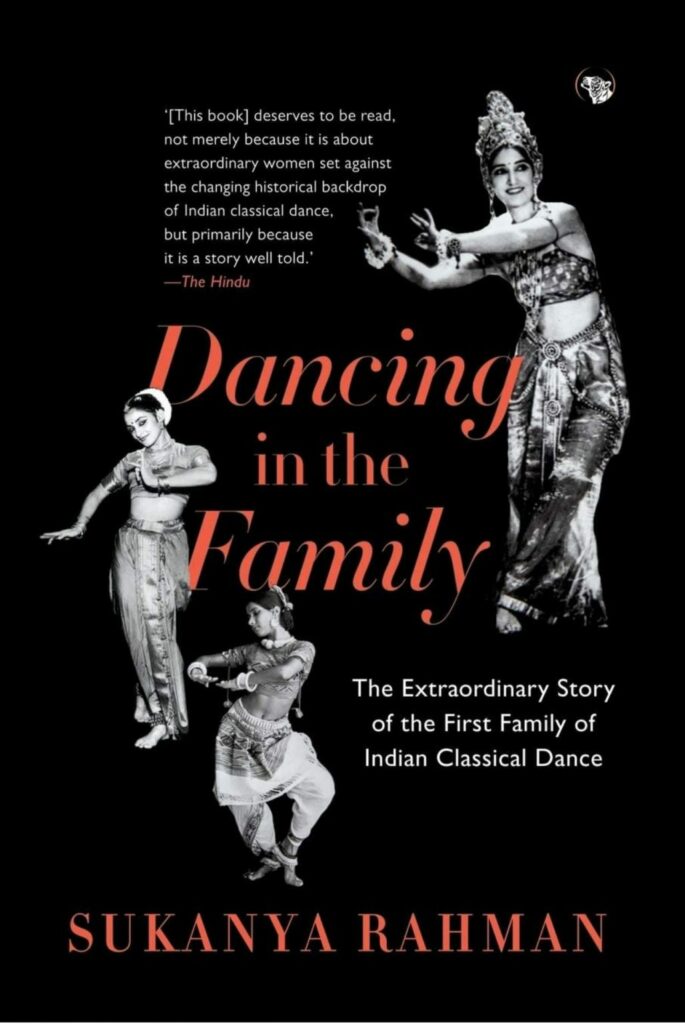
Slowly, but steadily, the world has opened up and performances are back where they belong! Inspired by that idea, the notion of the future, we reached out to four dancers-choreographers-curators and asked them to share with us their vision for dance. We were excited by their ideas, and insights! This is the cover story for Aavartana’s March edition that also marks the month where we dedicate to the importance of women’s rights, gender equality, et al. Our Interview section, this edition, anchored by Vidhya Nair, celebrates the life and journey of V Balakrishnan, acclaimed Singapore-based dancer-choreographer-teacher, who lays bare the many challenges life threw his way, and tells us his story in a way that the art and the artiste become one and the same! For us, at Apsaras Arts, February is a month we remember our co-founder, Neila Sathyalingam as that marks her birth anniversary. Neila Maami was all things amazing; her creativity, her enthusiasm, her generosity of spirit, are all worth a celebration. In that spirit, our Point of View section goes back in time and we recall a short speech Neila Maami made when she received an award, letting the audience into the birth of the name Apsaras and also predicting the future of Indian arts in Singapore. In our Books Banter section, we interview Odissi exponent, Ileana Citaristi, on her new book, Odissi and the Geeta Govinda, where Citaristi speaks about the premise, intent and process of the book and her own relationship with the Geeta Govinda, as a dancer. We are also excited to share as part of our In-Sights section, a detailed overview of the IPAC Symposium on Bharatanatyam that was a coming together of practitioners, scholars, writers, artistes, et al, soaking in the arts and sharing their knowledge and learnings with each other. Speaking of which, we really enjoyed listening to two beautiful artistes, Madhuri Suresh from Singapore and Divya Nayar from Coimbatore, India, as they discussed a host of things that unify them – dance. As rising stars, with meaningful insights, this conversation, under our umbrella of #iamayoungdancer, is a must-watch! In our Travel Diaries section, we travel back in time, to share a travel nugget from Little Angels, a multi-ethnic ensemble that was co-founded by Neila Sathyalingam. That section is all kinds of nostalgia for us! Speaking of Apsaras Arts, we have enjoyed two fantastically productive months, immersing, learning, sharing and presenting all things arts. We had the opportunity to showcase Nirmanika Re-imagined, our re-envisaged work that was originally created by our co-founder, Neila Sathyalingam, ten years ago, and that unfolds in an avatar that retains some elements from the original but also is infused with newness and some additions in imagination and choreography. We are so excited that the response to this work was phenomenal! Don’t forget to read a detailed interview with Aravinth Kumarasamy, Artistic Director of Nirmanika Re-Imagined, who wore many hats to re-create this work, a decade later. This is as part of Aavartana’s Work-in-Process. We also dedicate this edition to Singapore-based dancer-choreographer-teacher, Santha Bhaskar who passed on recently and whose contribution to the landscape of the Indian arts, especially Bharatanatyam, in Singapore, is beyond significant. Thank you Santha Aunty for all that you did! There’s a lot brewing and we are happy to be sharing it, in-person with the world! We are hoping to chronicle and document it all through Aavartana. We hope you like what you see and will be a part of this journey!
In-Sights
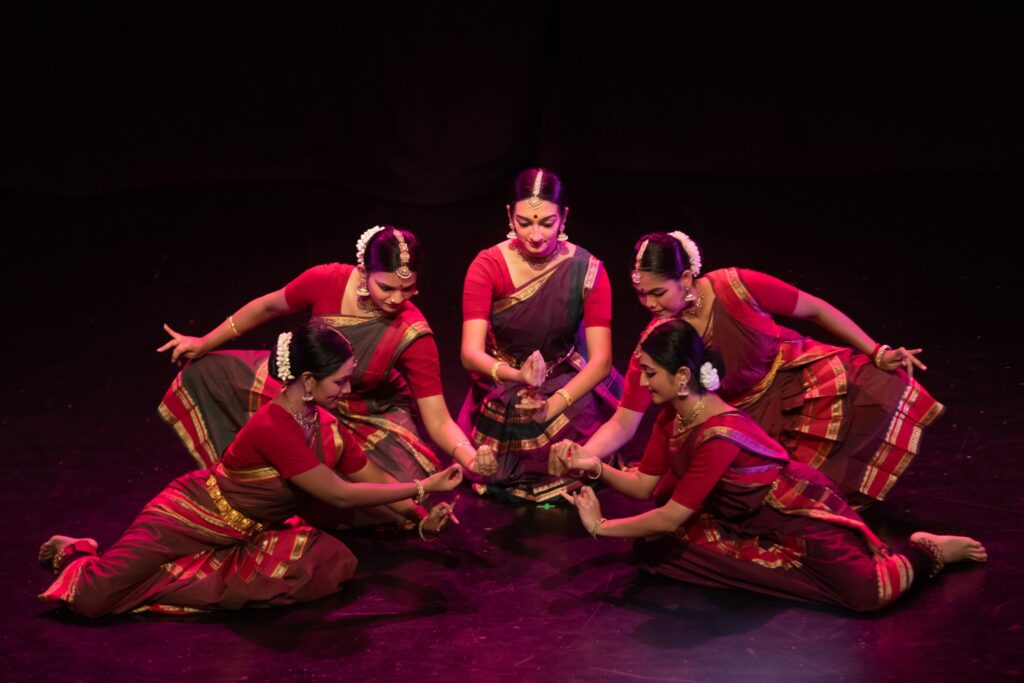
A detailed overview of the IPAC Symposium curated by Apsaras Arts that celebrated all things that matter to the world of Bharatanatyam. The IPAC (Indian Performing Arts Convection) by Apsaras Arts, held in the month of February, was the coming together of artistes, scholars and students all under one roof and enabling them to share their knowledge and soak in an artistic ambience and experience, in-person. This day-long symposium consisted of lec-dems, book readings, masterclasses, dance residencies and performances enabling the students to be mentored by senior artiste and creating work thereafter under their guidance. The main focus of the symposium, held on February 6 at the Esplanade Theatre Studio, Singapore, was the next generation of dancers who are keen to explore arts and artistry. The symposium began with exploring innovation in Bharatanatyam Choreography and comprised of two sessions – Re-imagining Alarippu by Sreedevy Sivarajasingam and Exploring Trikala Jathis by Lakshmi Krishnan, mentored by Priyadarsini Govind and Sheejith Krishna respectively. Sreedevy Sivarajasingam, a Bharatanatyam dancer-choreographer, underwent training at the Singapore Fine Arts society. The founding member of Omkar Arts, Sreedevy is a popular performer and teacher, having staged numerous shows in and around Singapore. Her session at IPAC was very interesting, in which she explored three Alarippus in Misra Jathi Jampa Talam in Tisra Nadai, the usual Tisra Eka Talam Alarippu and finally an Alarippu in Pancha Nadai. Each one was unique in its own way. While the first explored the rhythmic patterns, the second was an interesting exploration of the three energy points of the body and the final one was on unravelling the Panchakoshas. Lakshmi Krishnan, a senior Bharatanatyam teacher at Temple of Fine Arts, Singapore, is a passionate artiste who has been involved in creative work and keen on bringing innovations to dance. Her session at IPAC explored different permutations and combinations with which one can approach a jathi as well as adavus. She also put forth ideas with which one could create different choreographies with the same jathi. Roshini Pillay Kesavan, a dancer trained at SIFAS, and later under Neila Sathyalingam, kept the audience in attention while she talked about The Evolution of Bharatanatyam Pedagogy in Singapore. She shed light on the custodians of this ancient art form, the evolution, transmission and preservation by the traditional artistes and also on how this pedagogy has been applied to Bharatanatyam instruction in Singapore. Another interesting session was The Perspectives of Abhinaya, which focussed on exploring padams based on emotions and reactions. This session was presented by Vardhini Subramaniam, demonstrated by Madhuri Suresh and Seema Harikumar, mentored under the guidance of abhinaya exponent, Bragha Bessell. The whole idea was depicted via the padam Kaaranam Keettu Vaadi, in which two different types of heroines explore the underlying emotions and reactions to the song. Mohanapriyan Thavarajah, Principal Dancer and Resident Choreographer at Apsaras Arts Dance Company, shared his experiences of creating group work in the Company, specifically in extending the dance vocabulary to ensemble productions for specific themes. This has been his journey in the Company over the years, working on various group productions, including themes relating to South East Asian narratives. Millennial Adavus: Exploration of Bharatanatyam Adavus was a refreshing session on how to reinterpret the traditional adavus without losing their intrinsic structure. The ‘newness’ in the adavus in the millennial world, was brought to fore from the personal experiences and learnings of Apoorva Jayaraman and Shweta Prachande. They are being mentored under Priyadarsini Govind, and are artistes in their own right. For any art form, the audience too plays a great role in encouraging the art as well as the artiste. This too was discussed in a panel discussion on the topic, Audience Experience of Bharatanatyam. The panel included five members of the audience, Vidhya Nair, Vidhya Venkat, Tharmendra Jayaraman, Sri Ganesh Lakshminarayanan and Jayashree Govindh. Various topics pertaining to what the audiences observe in a performance was deeply discussed. This session was moderated by Seema Hari Kumar. Composing Music for Dance, a very relevant topic in the current scenario, was discussed by Dr Rajkumar Bharathi and Chitra Poornima. Needless to say, this exchange between the two artistes was interesting and thought provoking. Exploring Contemporary dance by Indian Classical dancers Mavin Khoo and Akram Khan was one of the highlights of IPAC. The two dancers inspired many young and aspiring dancers of the audience, with their energetic exchange on the topic of contemporary dance. They discussed the importance of conviction of artistic choices and the notion of trajectory in performances. Lastly, the symposium comprised a showcase performance by the dancers of Singapore Fine Arts. They performed the Dvijavanthi Thillana, which was choreographed by Rama Vaidyanathan.This particular Thillana, a composition of Balamurali Krishna, was choreographed with much thought and attention to detail. Rama Vaidyanathan says that she tried to keep the melodic phrases of the raga intact and at the same time, tried to capture the free-spirited nature of the legendary artiste in this Thillana. Overall, IPAC Symposium was a gratifying experience, for both the curators, the artistes and the audience.